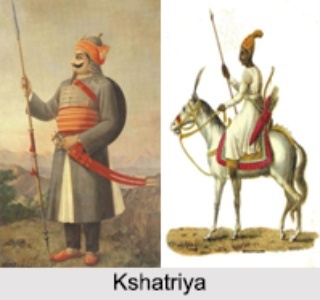In the intricate tapestry of Vedic society, the concept of Varna plays a
pivotal role in defining social structure and responsibilities. Among the four
primary Varnas, the Kshatriya holds a distinctive place. Traditionally regarded
as the warrior and ruling class, the Kshatriyas are integral to understanding
ancient Indian social dynamics.
The term "Kshatriya"
is derived from the Sanskrit root "Kshatra," which translates to
"dominion" or "power." This Varna's historical roots can be
traced back to the Vedic texts, particularly the Rigveda and the Manusmriti.
The Kshatriyas were tasked with upholding justice, governance, and protection,
contrasting with the Brahmins, who were scholars and priests, and the Vaishyas,
who were merchants and agriculturists. The Shudras, the fourth Varna, served
the other three Varnas.
The primary duties of Kshatriyas were centered around leadership,
defense, and administration. As warriors and kings, they were responsible for
defending their realms from external threats and maintaining internal order.
This martial role was not merely about combat; it also encompassed a broader
spectrum of governance, including law enforcement, diplomacy, and societal
welfare.
In times of peace, Kshatriyas were expected to provide fair and just
governance. They were the protectors of the dharma (righteousness) and the
enforcers of societal laws and norms. Their role also involved patronizing the
Brahmins and supporting religious and cultural institutions, thereby
maintaining a balance between temporal and spiritual spheres.
Unlike the Brahmins, who were primarily focused on spiritual and
scholarly pursuits, Kshatriyas were trained to handle the practical aspects of
ruling and warfare. This dual training ensured that they could uphold dharma in
all aspects of governance and society.
Over time, the influence of the Kshatriyas waned, particularly with the
rise of new political and social dynamics. The decline of the traditional
feudal system, the emergence of new political structures, and the increased
influence of the British colonial administration transformed the role of the
Kshatriyas.
The Kshatriya
Varna’s legacy is reflected in various aspects of Indian culture, including
literature, folklore, and historical narratives. The valor and principles
associated with Kshatriyas are celebrated in epic texts like the Mahabharata
and the Ramayana, where Kshatriya heroes and kings play crucial roles in the
unfolding of the narratives.
In conclusion, the Kshatriya
Varna represents more than just a historical class; it embodies ideals of
leadership, courage, and duty. Understanding the Kshatriyas’ role provides
valuable insights into the Vedic social structure and its impact on
contemporary Indian society. While the traditional Varna system has evolved,
the essence of the Kshatriya’s contribution to governance and society remains a
testament to their enduring legacy.

No comments:
Post a Comment